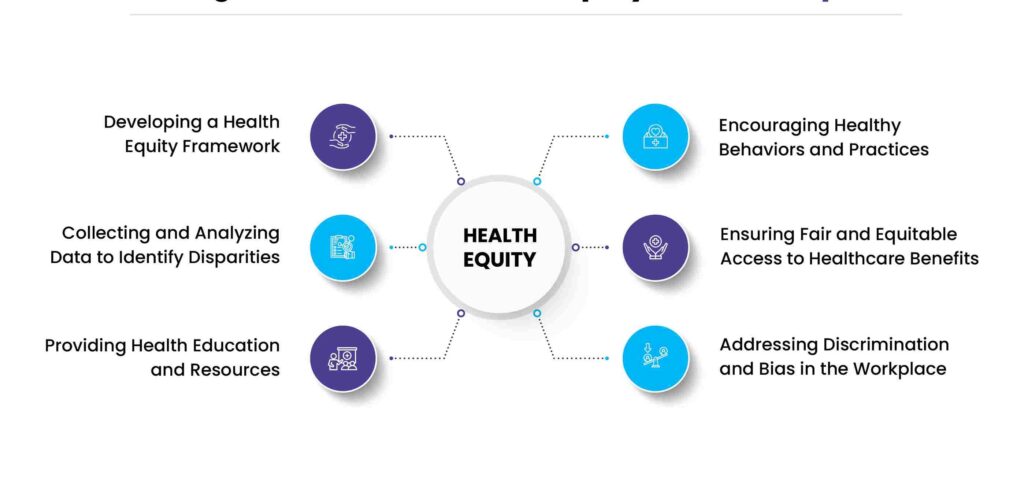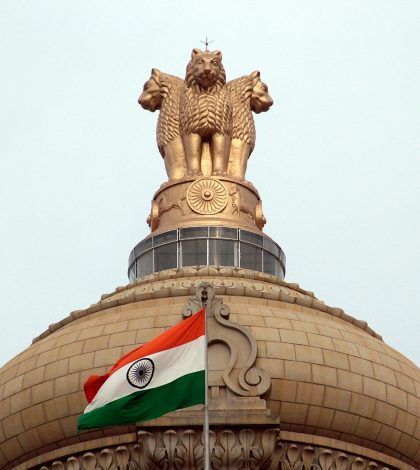ADVANCING HEALTH EQUITY IN INDIA
Health equity refers to the fair and just opportunity for everyone to achieve their highest potential for health, regardless of social, economic, or demographic factors. It involves eliminating health disparities, ensuring that marginalized and vulnerable populations have access to essential health services.
Context and Statistics:
- The COVID-19 pandemic exposed stark health disparities globally and within India, highlighting the urgent need to advance health equity.
- For instance, a WHO report from 2022 indicated that marginalized communities faced significantly higher COVID-19 mortality rates due to limited access to healthcare.
- Similarly, the emerging threat of mpox, with cases spreading from Africa to other parts of the world, underscores the ongoing challenges in ensuring equitable access to health services and vaccines.
Significance of Advancing Health Equity

Preventing Disparities in Health Outcomes:
- Advancing health equity is crucial to preventing disparities in health outcomes among different social groups. The COVID-19 pandemic demonstrated how marginalized communities, such as the urban poor, faced higher infection rates and mortality due to inadequate access to healthcare. Ensuring equitable access to vaccines and treatments during the mpox outbreak could prevent similar disparities.
- Example/Case Study: During the COVID-19 pandemic, the Mumbai slum of Dharavi initially reported high infection rates, but a focused intervention with testing, isolation, and treatment helped control the outbreak. This demonstrates the importance of targeted health interventions in marginalized areas.
Strengthening National Health Security:
- Health equity is integral to national health security. By ensuring that all segments of the population have access to healthcare, India can prevent localized outbreaks from escalating into national or global health crises. The spread of mpox from Africa to other continents illustrates how health inequities in one region can have global consequences.
- Example/Case Study: The WHO’s declaration of mpox as a Public Health Emergency of International Concern (PHEIC) emphasizes the need for a global response that includes equitable access to vaccines and healthcare services.
Promoting Social Justice and Inclusivity:
- Health equity is a cornerstone of social justice. It ensures that marginalizedcommunities, often excluded from mainstream healthcare systems, receive the care they need. This inclusivity is vital for building a cohesive society where every individual has the opportunity to lead a healthy life.
- Example/Case Study: The Ayushman Bharat scheme, which provides free healthinsurance to the economically disadvantaged, is a step towards promoting health equity in India.
Enhancing Economic Productivity:
- Health equity contributes to economic productivity by reducing the burden of disease on marginalized communities, enabling them to contribute effectively to the economy. A healthy population is more productive, which is essential for India’s growth, especially as it recovers from the economic impacts of the COVID-19 pandemic.
- Example/Case Study: The Pradhan Mantri Jan Arogya Yojana (PM-JAY), which aims to provide health coverage to millions of low-income families, can potentially reduce the economic burden of healthcare on these families, allowing them to allocate resources to other productive activities.
INDIA'S FIGHT AGAINST TB: CHALLENGES AND STRATEGIES
Challenges in Promoting Health Equity

Healthcare Infrastructure Gaps:
- India’s healthcare infrastructure is unevenly distributed, with rural and marginalized communities often lacking access to quality health services. During the COVID-19 pandemic, these gaps were starkly evident, as rural areas struggled with shortages of medical supplies, oxygen, and healthcare professionals.
- Example/Case Study: During the second wave of COVID-19, many rural areas in states like Uttar Pradesh and Bihar faced severe shortages of medical oxygen and hospital beds, leading to higher mortality rates.
Economic Disparities and Affordability Issues:
- Economic disparities in India mean that marginalized communities often cannot afford healthcare services, even when they are available. The cost of vaccines, treatments, and other medical services can be prohibitive, exacerbating health inequities.
- Example/Case Study: The high cost of the mpox vaccine, estimated at $100 per dose, highlights the affordability challenges faced by low-income populations in accessing lifesaving treatments.
Social Determinants of Health:
- Social determinants such as poverty, education, and living conditions significantly impact health outcomes. Marginalized communities often face multiple disadvantages, including poor nutrition, inadequate housing, and limited access to clean water, all of which contribute to poorer health outcomes.
- Example/Case Study: The National Family Health Survey (NFHS-5) revealed that malnutrition rates in certain tribal communities are alarmingly high, leading to higher susceptibility to diseases like COVID-19 and mpox.
Barriers to Technology and Innovation Access:
- The lack of access to modern healthcare technologies and innovations, including vaccines and diagnostic tools, is a significant barrier to advancing health equity. During the COVID-19 pandemic, the Global South, including India, faced delays in accessing vaccines developed in the West, which could happen again with mpox if technology transfers are not prioritized.
- Example/Case Study: India’s efforts to secure technology transfers for vaccine production, as seen with the Oxford/AstraZeneca vaccine, underscore the importance of building local manufacturing capacities to address health equity.
Initiatives to Promote Equitable Health Access

Government Health Schemes:
- The Indian government has launched several health schemes aimed at promoting equitable access to healthcare, such as Ayushman Bharat, which provides health coverage to millions of low-income families. This scheme is designed to reduce the financial burden of healthcare on marginalized communities.
- Example/Case Study: Ayushman Bharat has benefited over 5 crore families by providing them access to secondary and tertiary healthcare, significantly reducing out-of-pocket expenses for the poor.
Public-Private Partnerships (PPP):
- Public-private partnerships have been instrumental in expanding healthcare access in India. By collaborating with private entities, the government has been able toleverage additional resources and expertise to reach underserved populations.
- Example/Case Study: The COVID-19 vaccination drive in India saw significant involvement from the private sector, which helped expand the reach of the campaign, particularly in urban slums and rural areas.
Public-Private Partnerships (PPP):
- To address the challenges of vaccine access, India has focused on technology transfers and local manufacturing. Indian pharmaceutical companies have the capacity to produce vaccines at scale, making them more accessible and affordable for marginalized communities.
- Example/Case Study: The Serum Institute of India’s role in mass-producing the Oxford/AstraZeneca vaccine (Covishield) is a key example of how local manufacturing can promote health equity by ensuring timely and affordable access to vaccines.
International Collaboration and Aid:
- India has also engaged in international collaboration to enhance its health equity efforts. This includes working with global organizations such as WHO, Gavi, and CEPI to secure funding, technical support, and access to essential medical supplies.
- Example/Case Study: India’s participation in the COVAX initiative, which aims to ensure equitable global access to COVID-19 vaccines, demonstrates the importance of international collaboration in promoting health equity.
Conclusion
- Advancing health equity in India, particularly in the context of emerging health threats like mpox, is crucial for building a resilient and inclusive healthcare system. The COVID-19 pandemic has provided valuable lessons in the importance of equitable access to healthcare, which must now be applied to current and future health crises.
- By addressing infrastructure gaps, promoting technology transfers, and ensuring affordable access to vaccines and treatments, India can make significant strides toward health equity.
- The government, in collaboration with international organizations and the private sector, must continue to prioritize the needs of marginalized communities, ensuring that no one is left behind in the fight against emerging health threats.


